Reassessing the in-situ stress regimes of Australia’s petroleum basins
Rosalind King A , Simon Holford B , Richard Hillis C , Adrian Tuitt B , Ernest Swierczek D , Guillaume Backé D , David Tassone B and Mark Tingay BA The University of Adelaide
B Australian School of Petroleum, The University of Adelaide
C Deep Exploration Technologies CRC
D Australian School of Petroleum, CO2CRC
The APPEA Journal 52(1) 415-426 https://doi.org/10.1071/AJ11033
Published: 2012
Abstract
Previous in-situ stress studies across many of Australia’s petroleum basins demonstrate normal fault and strike-slip fault stress regimes, despite the sedimentary successions demonstrating evidence for widespread Miocene-to-Recent reverse faulting.
Seismic and outcrop data demonstrate late Miocene-to-Recent reverse or reverse-oblique faulting in the Otway and Gippsland basins. In the Otway Basin, a series of approximately northeast to southwest trending anticlines related to reverse-reactivation of deep syn-rift normal faults, resulting in the deformation of Cenozoic post-rift sediments are observed. Numerous examples of late Miocene-to-Recent reverse faulting in the offshore Gippsland Basin have also been observed, with contractional reactivation of previously normal faults during these times partially responsible for the formation of anticlinal hydrocarbon traps that host the Barracouta, Seahorse and Flying Fish hydrocarbon fields, adjacent to the Rosedale Fault System.
A new method for interpreting leak-off test data demonstrates that the in-situ stress data from parts of the Otway and Gippsland basins can be reinterpreted to yield reverse fault stress regimes, consistent with the present-day tectonic setting of the basins. This reinterpretation has significant implications for petroleum exploration and development in the basins. In the Otway and Gippsland basins, wells drilled parallel to the orientation of the maximum horizontal stress (σH) represent the safest drilling directions for both borehole stability and fluid losses. Faults and fractures, striking northeast to southwest, previously believed to be at low risk of reactivation in a normal fault or strike-slip fault stress regime are now considered to be at high risk in the reinterpreted reverse fault stress regime.
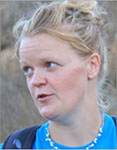
Rosalind King completed her BSc (hons) and PhD at the University of Liverpool in 2001 and 2005, respectively. Her PhD research studied the structural evolution of the Cape Fold Belt in South Africa. She worked as a post-doctoral researcher at the Australian School of Petroleum (University of Adelaide) from 2005–10, studying the present-day stresses of northwest Borneo and delta—deepwater fold-thrust belts. She is a lecturer at the School of Earth and Environmental Sciences (University of Adelaide) and her research includes the tectonics of deepwater fold-thrust belts, detachments, fold and thrust mechanics, and petroleum geomechanics. She serves as the president of the South Australian Branch of PESA. Member: GSL, AAPG, PESA. rosalind.king@adelaide.edu.au |
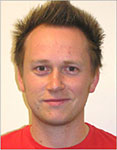
Simon Holford is an Australian Research Council post-doctoral fellow and lecturer at the Australian School of Petroleum. He is the deputy director of the Centre for Tectonics, Resources and Exploration (TRaX) at the University of Adelaide. He graduated with a BSc (hons) from Keele University (2001) and a PhD from the University of Birmingham (2006). His research interests are in the deformation, uplift and magmatic evolution of rifted margins, sedimentary basins, and continental interiors and their impact on hydrocarbon exploration. Member: AGU, ASEG, GSA, GSL, PESA. simon.holford@adelaide.edu.au |

Richard Hillis is the CEO of the Deep Exploration Technologies Cooperative Research Centre. Richard graduated with a B.Sc (Hons) from Imperial College (London), and a PhD from the University of Edinburgh. Richard was previously the Mawson Professor of Geology and Head of the Australian School of Petroleum at the University of Adelaide. He has published and consulted extensively in the areas of petroleum geomechanics and basin tectonics. Richard is also a non-executive director of Petratherm (a listed geothermal company), KCI Resources, JRS Petroleum Research and AuScope. richardhillis@detcrc.com.au |
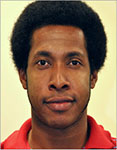
Adrian Tuitt was a Postdoctoral Fellow at the Australian School of Petroleum until July 2010. He graduated from the University of Edinburgh with a B.Sc (Hons) in geology and a PhD in structural geology. Adrian’s research work involves seismic interpretation and numerical modelling, with a particular interest in deformation along continental margins and delta systems. Member: PESA. adrian_tuitt@hotmail.com.au |
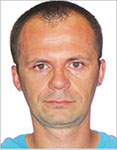
Ernest Swierczek is a PhD candidate at the Australian School of Petroleum (University of Adelaide). In 2006, he obtained his MSc (petroleum geology) from AGH University of Science and Technology, Cracow, Poland. During this time, he studied petroleum prospectivity of the Skole Nappe in the Polish Eastern Carpathian Foredeep Basin. He worked for a few years before he started his PhD as geoscientist at geophysical consulting company in Adelaide. His research interests are in 3D structural and geomechanical modelling, fault reactivation, and fault mechanics for carbon storage process. Member: AAPG, ASEG, AGU, EAGE, PESA. ernest.swierczek@adelaide.edu.au |
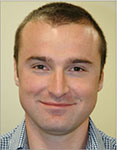
Guillaume Backé is a structural geologist with an expertise in seismic interpretation, three-dimensional structural and geomechanical modeling. He obtained a Master of Geophysics at the University of Toulouse III in France in June 2002, and completed a PhD at the University of Pau et des Pays de l’Adour in 2006. He very recently joined BP as a structural geologist in the Integrated Sub-surface and Description and Modelling team (ISDM), following a two-year Postdoctoral position in the Centre for Mineral Exploration Under Cover (CMXUC) and a three-year lecturing position at the Australian School of Petroleum of the University of Adelaide. Member: AAPG, PESA, AGU and EAGE. guillaume.backe@uk.bp.com |
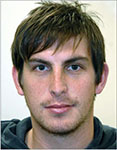
David Tassone is a PhD student at the Australian School of Petroleum. He graduated with a BSc (hons) from The University of Adelaide in 2008. His research interests include geomechanics as well as the burial history of sedimentary basins and the associated tectonic scale processes. Member: AAPG, ASEG, PESA, EAGE. david.tassone@adelaide.edu.au |
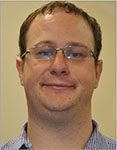
Mark Tingay is a senior lecturer at the Australian School of Petroleum, where he examines the petroleum geomechanics, overpressures and the tectonic evolution of sedimentary basins in Australia and southeast Asia. In particular, he specialises in studying the stresses in sedimentary basins and the mechanics of rock failure and fluid mobilisation in zones of very high pore pressure, including oil field blowouts and natural features, such as mud volcanoes. Mark graduated with a PhD in geophysics from the Australian School of Petroleum in 2003, worked at the World Stress Map Project in Germany from 2003–06, and has been a lecturer in petroleum geology and drilling engineering at the University of Adelaide and Curtin University since 2006. He has published more than 45 peer-reviewed papers, taught industry short courses on petroleum geomechanics to companies and for the American Association of Petroleum Geologists and Society of Petroleum Engineers, and routinely provides media interviews on geoscience and petroleum industry issues. mark.tingay@adelaide.edu.au |


